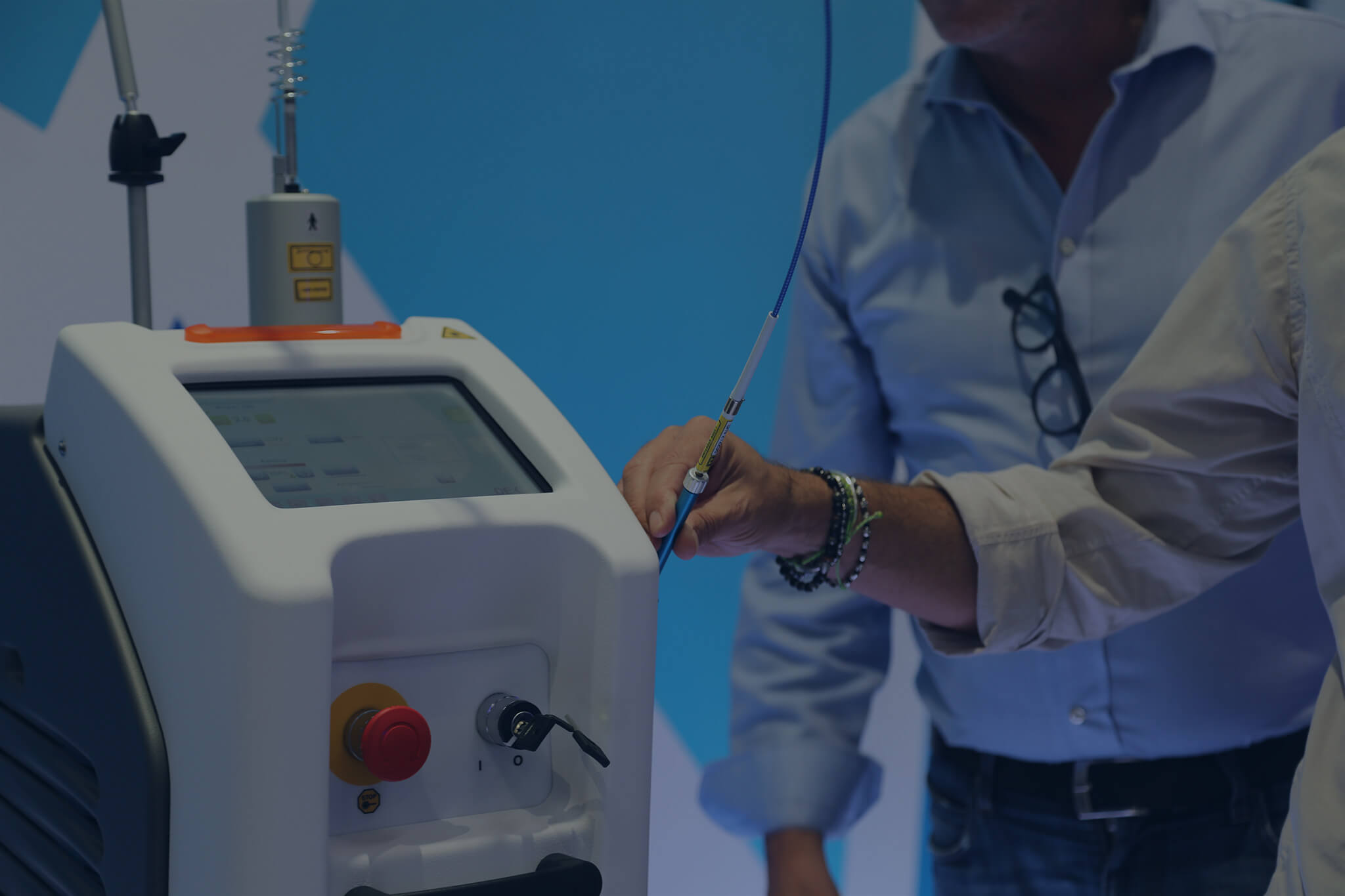The History of CO₂ Medical Lasers
This article delves into the fascinating history of CO₂ lasers, examining their development from theoretical concepts to cutting-edge machines with a proven track record of success.
Early days: the genesis of laser technology
To appreciate CO₂ lasers, one must first understand the foundation of laser technology. The concept of a laser, an acronym for Light Amplification by Stimulated Emission of Radiation, was theorized by Albert Einstein in 1917.
However, it wasn’t until 1954 that Charles Townes and Arthur Schawlow proposed the theoretical framework for lasers using microwaves. This work paved the way for the development of the first working laser by Theodore Maiman in 1960, using a synthetic ruby crystal.
The emergence of gas lasers
As laser technology continued to advance, researchers sought alternatives to solid-state mediums. In the early 1960s, the gas laser era began with the creation of the helium-neon laser.
This breakthrough set the stage for further exploration into gas-based laser media, leading to the development of the CO₂ laser.
The birth of the CO₂ laser
Kumar Patel conceived the idea of a carbon dioxide laser in 1963 while working at Bell Labs. This development opened up new possibilities in industrial, medical, and scientific fields. The versatility and efficiency of CO₂ lasers made them invaluable tools for cutting, welding, medical procedures, and scientific research, among other uses.
Beyond his work on CO₂ lasers, Patel has made significant contributions to the broader field of medical laser technology. His pioneering research and innovations have earned him numerous accolades, including the National Medal of Science, which he received in 1996 for his contributions to the field.
The CO₂ laser, a product of Patel’s ingenuity, stands as a testament to the profound impact that a single individual can have on creating new technologies.
Technological advancement: early applications and industrial adoption
The usage of CO₂ lasers increased quickly. High-power output and versatility were among two of the biggest benefits of the early technology.
In the late 1960s, CO₂ lasers were used for cutting and welding metals, marking the beginning of the widespread adoption of laser technology in manufacturing processes. The precision and efficiency provided by CO₂ lasers revolutionized industries such as automotive, aerospace, and electronics. Healthcare is another sector that has benefited tremendously from laser technology.
Medical applications: surgical precision using CO₂ lasers
Starting in the 1970s, the healthcare field embraced CO₂ lasers for their accuracy and ability to interact with soft tissues. Surgeons began using CO₂ lasers for delicate procedures, including tumor removal and eye surgeries, among others. The focused and powerful beams of CO₂ lasers allowed for greater control and minimized damage to surrounding tissues, making them indispensable tools for medical teams.
Advances in technology: continuous wave and pulsed lasers
Over the years, technological advancements have refined CO₂ laser systems. Initially, CO₂ lasers operated primarily in continuous-wave mode. However, the development of pulsed CO₂ lasers introduced new possibilities, expanding their applications to areas such as material processing, engraving, and microfabrication. Healthcare teams also use various pulse types in the operating room, tailoring pulse duration, frequency, and wattage to patient needs and surgeon preferences.
CO₂ lasers in scientific research
Beyond industrial and medical applications, CO₂ lasers have played a crucial role in scientific research and exploration. The unique abilities afforded by laser technology have facilitated experiments in spectroscopy, atmospheric monitoring, and even space exploration.
CO₂ lasers have been utilized in various scientific missions in space to analyze the composition of distant celestial bodies.
Evolving technologies: solid-state lasers
As technology progressed, alternative laser types emerged, such as solid-state lasers. These lasers challenged the dominance of traditional CO₂ lasers in certain applications.
However, CO₂ lasers remained relevant due to their unique properties, such as the ability to operate in the far-infrared spectrum, making them indispensable in specific contexts within science, industry, and medicine.
Contemporary applications: diversity and precision
In the 21st century, CO₂ lasers have continued to evolve and diversify. From laser cutting and engraving to extremely precise medical procedures, CO₂ lasers serve a variety of purposes.
The precision, efficiency, and versatility of CO₂ lasers have made them essential tools in fields as diverse as telecommunications, defense, and environmental monitoring.
Future prospects: advancements and innovations in CO₂ lasers
Looking ahead, the future of CO₂ lasers is bright. Ongoing research and development efforts aim to enhance their performance, reduce size, and increase energy efficiency.
Innovations such as mode-locked CO₂ lasers and advancements in beam shaping techniques promise to open new frontiers in applications ranging from communication systems to advanced materials processing.
IML: delivering global medical innovation to the US
IML’s core mission revolves around sourcing innovative medical devices from manufacturers across the globe. By partnering with leading international manufacturers, IML ensures that cutting-edge medical technologies are available to medical professionals in the U.S.
This process facilitates the integration of advanced equipment into the American healthcare landscape and fosters a continuous cycle of innovation and improvement.
Through a robust network of medical device sales reps, IML extends its support to medical teams, enabling them to address patient care effectively. This collaborative approach ensures that hospitals, surgery centers, and clinics throughout the U.S. have access to the latest advancements in medical technology. By facilitating the adoption of these innovations, IML plays a small role in enhancing patient outcomes, streamlining medical procedures, and improving overall healthcare delivery.
The partnership between IML and international manufacturers exemplifies a commitment to excellence in healthcare, transcending geographical boundaries. As medical professionals strive for excellence in patient care, IML serves as a catalyst in bringing cutting-edge medical devices to the forefront, empowering healthcare providers with the tools they need to meet the evolving challenges of modern medicine.
Become an IML manufacturer or dealer partner
Interested in partnering with IML to grow your medical device business? Visit the partnerships and dealer pages on our website to learn more.
